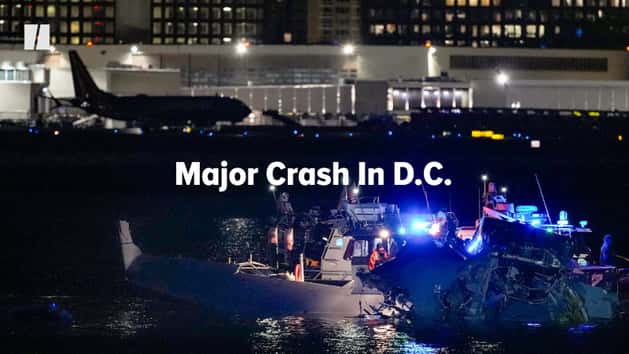


The National Transportation Safety Board offered new details Friday about the fatal collision between a U.S. Army Black Hawk and an American Airlines plane in Washington late last month, including the possibility that the helicopter crew was using “bad data” and didn’t hear all instructions from air traffic control.
Both the military helicopter’s pilot and the pilot instructor inside the aircraft reported different altitudes in the minutes before the Jan. 29 collision, suggesting they were having an issue with their barometric altimeters, NTSB Chair Jennifer Homendy said at an afternoon press conference.
“The pilot flying indicated they were at 300 feet. The instructor pilot indicated they were at 400,” she said of their communication roughly four minutes before the collision. “Neither pilot made a comment discussing an altitude discrepancy. At this point, we don’t know why there was a discrepancy between the two. That’s something that the investigative team is analyzing.”

As the helicopter continued south toward Ronald Reagan National Airport, approaching the Francis Scott Key Bridge, the instructor pilot was recorded in the cockpit voice recorder (CVR) reporting that they were at an altitude of 300 feet, descending to 200 feet. A minute later, while passing over the Arlington Memorial Bridge, the instructor pilot told the pilot that they were still at 300 feet and needed to descend. The pilot flying said they would descend to 200 feet, Homendy said.
Approximately two minutes before the collision, air traffic control was recorded telling the Black Hawk helicopter that the passenger plane was circling to land just south of them. But the portion of the transmission informing them of the plane “circling” “may not have been received by the Black Hawk crew,” Homendy said.
“We hear the word ‘circling’ in ATC communications, but we do not hear the word ‘circling’ in the CVR of the Black Hawk.” This is being evaluated, she said.

The helicopter’s crew responded to the tower by confirming that they had the air traffic ahead in sight. As both aircraft grew steadily closer, air traffic control again asked the Black Hawk helicopter if the passenger plane was in sight. The tower then immediately directed the helicopter to pass behind the oncoming plane in a message that the helicopter’s crew may not have fully received.
“CVR data from the Black Hawk indicated that a portion of the transmission that stated ‘pass behind the [plane]’ may not have been received by the Black Hawk crew,” Homendy said.
Instead, the radio feed between the tower and helicopter was interrupted or “stepped on” when the Black Hawk’s crew activated a microphone to confirm that the air traffic was in sight, Homendy said.
At the time of impact, the passenger plane’s radio altitude was 313 feet. Radio altitude measures the height of an aircraft above a terrain, which in this case was the Potomac River, the NTSB said. This was recorded two seconds before the collision, Homendy said.

In contrast, the radio altitude of the Black Hawk at the time of the collision was 278 feet, a height that had been steady for the previous five seconds, she said.
“I want to caution that does not mean that that’s what the Black Hawk crew was seeing on the barometric altimeters in the cockpit. We are seeing conflicting information on the data, which is why we’re not releasing altitude for the Black Hawk’s entire route,” she said.
There’s no indication that the helicopter crew was aware of the impending collision before it happened, she added.
Only the on-scene portion of the NTSB’s investigation has wrapped up as of Friday, meaning a lot more work is needed before any conclusions can be made, Homendy said.
“We are looking at the possibility [that] there may be bad data. We are looking at, were they seeing something different in the cockpit that differs from [Flight Data Recorder] data, which was radio altimeter,” she said.
Homendy also addressed concerns about whether night vision goggles used by the helicopter’s pilots interfered with their vision.
Go Ad-Free — And Protect The Free Press
Already contributed? Log in to hide these messages.
The helicopter was flying as part of a practical exam or so-called “check ride” in order for the pilot to be qualified for specific future duties. Part of the exam was a “night vision check ride,” meaning they were all likely wearing night vision goggles as part of the exam’s requirement, Homendy said.
“Had they been removed, the crew was required to have a discussion about going unaided,” she said. “There is no evidence on the cockpit voice recorder or CVR of such a discussion.”
A visibility study will be carried out to determine how the goggles may have impacted their vision, she said.

